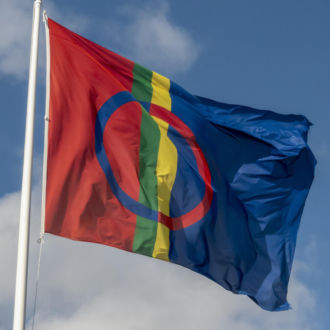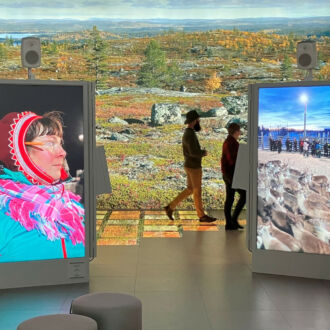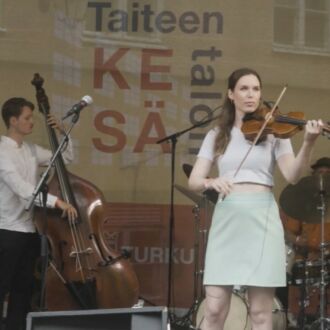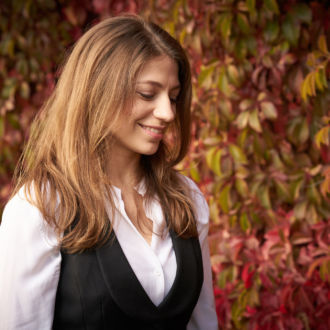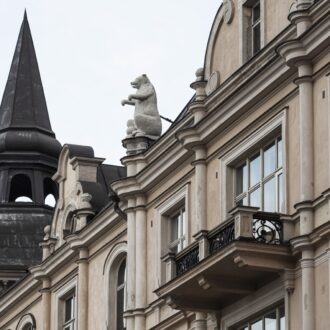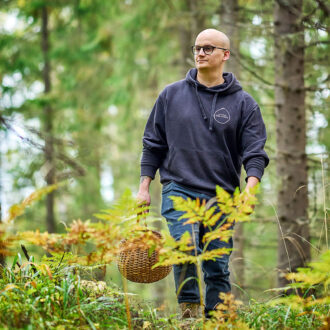Every music festival is about more than just the music. The best ones also create a welcoming atmosphere for fans and friends who come from near and far to hang out with each other as well as see the bands. The event has a place in the local culture while also claiming attention on the world stage.
These things are even truer of Ijahis Idja (Nightless Night) than they are of most other festivals. It’s an annual Indigenous music fest that takes place in Inari, a town in the far north of Finland, almost 1,200 kilometres (750 miles) from Helsinki.
Inari is also located in Sápmi, the homeland of the Sámi, the only recognised Indigenous People in the EU area. (Sápmi is divided into four parts by the borders of the nation-states Finland, Sweden, Norway and Russia.)
Rising volume
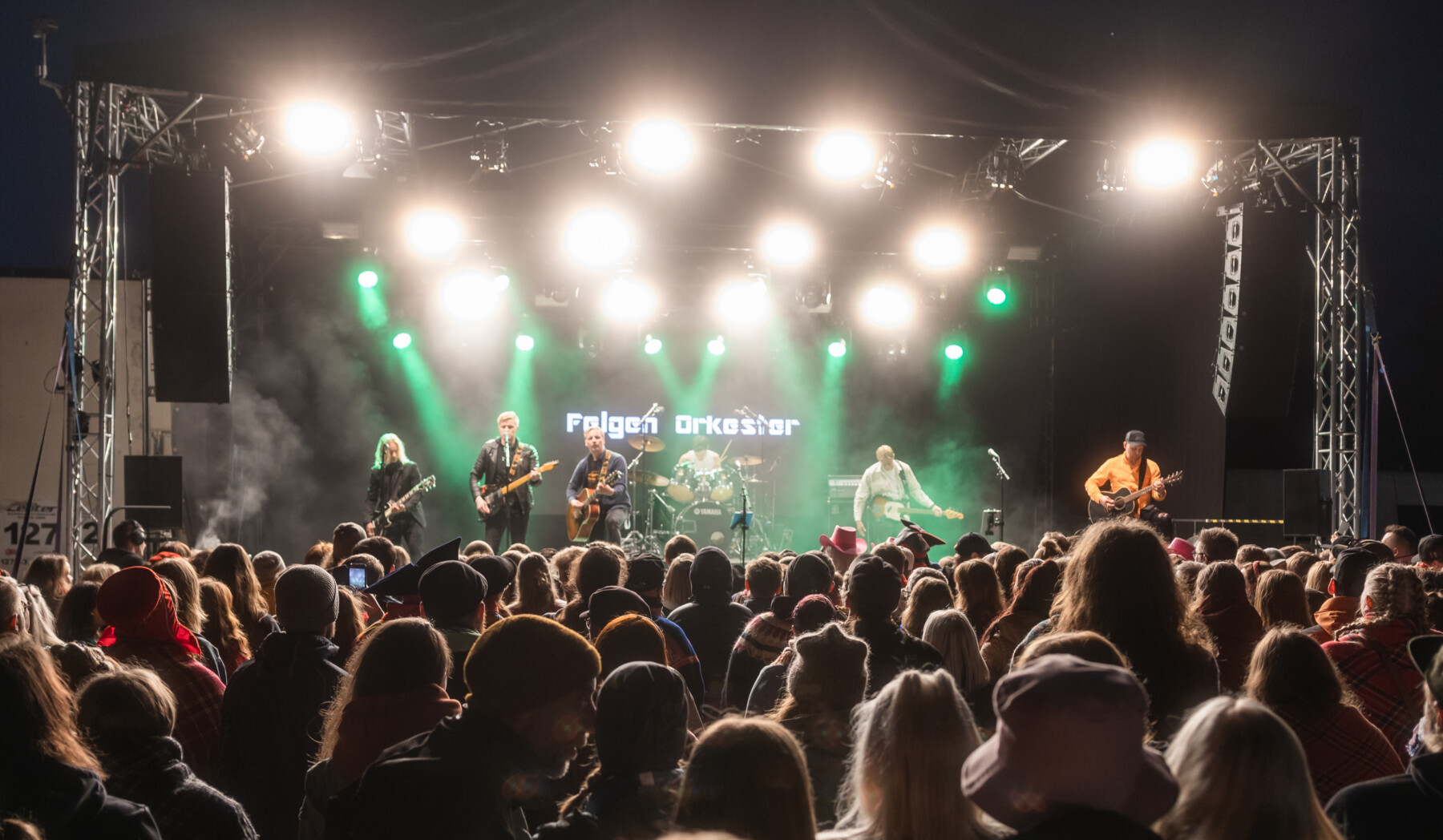
Felgen Orkester, a folk rock outfit from the Norwegian side of the border, performs an energetic set for the Ijahis Idja audience.Photo: Ville Fofonoff
Ijahis Idja features Sámi music in mid-August on an open-air stage in front of Sajos, the Sámi cultural centre. The midnight sun of midsummer has subsided, but the northern days still last long into the evening. The weather could be summery, but it is more likely to carry the chill of early autumn.
Since the festival’s inception in 2004, it has come to serve as a meeting point of cultural significance, attracting an audience from across Sápmi and from the south, too. (Just about everywhere is in the south when you’re standing in downtown Inari – even Ivalo Airport, the northernmost in the EU, is about 50 kilometres (30 miles) to the south.)
Festival visitors mill around between performances, greeting each other, shaking hands and catching up. There are young families around during the day. Later on, the volume level rises as the sky fades to twilight, and a crowd with everyone from teens to old-timers applauds the artists and dances to the music.
Musical crossroads
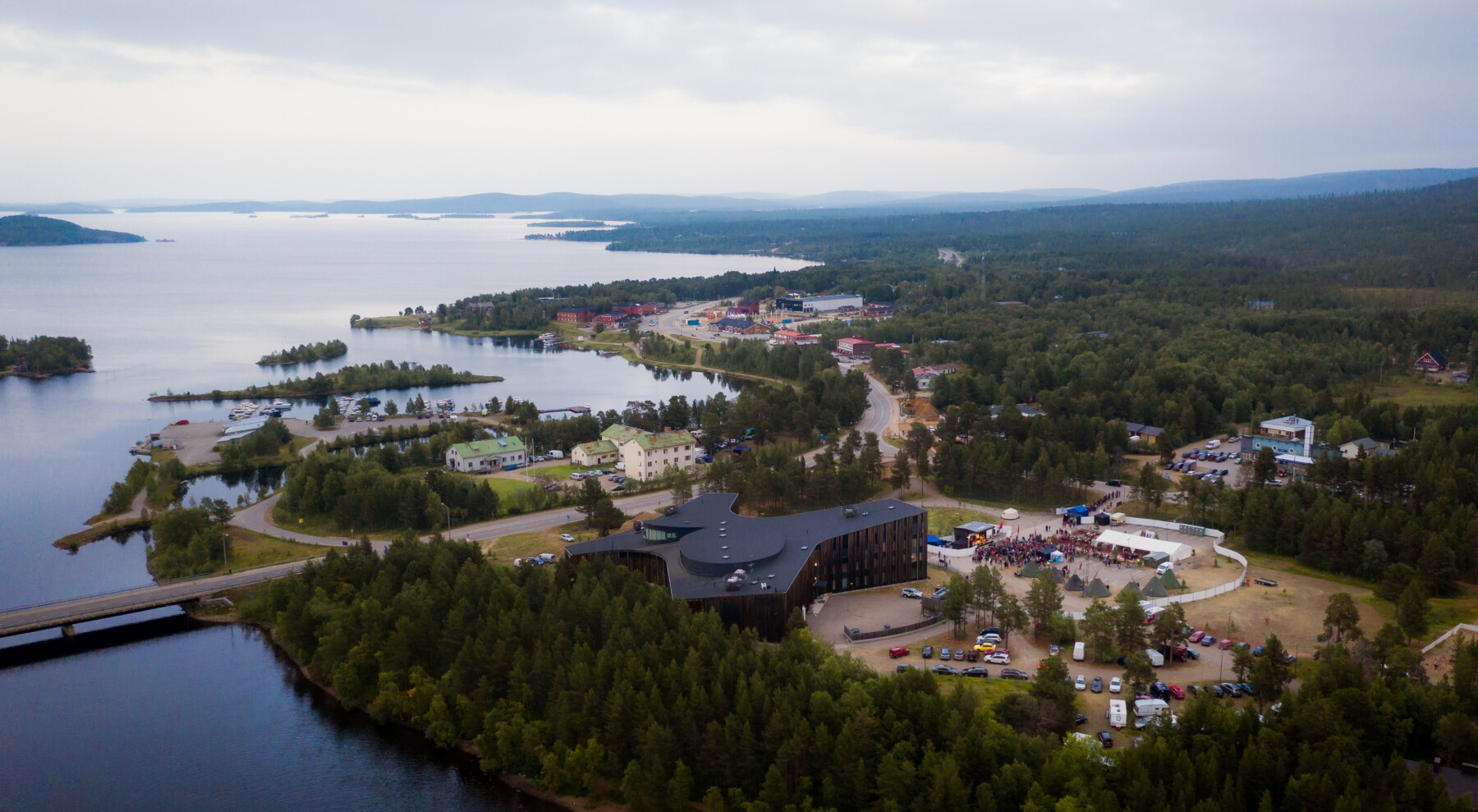
The Sámi cultural centre Sajos (centre) stands on the outskirts of Inari, which is located on the shore of the vast Lake Inari.Photo: Ville Fofonoff
You’ll hear people in the audience speaking Sámi languages as well as Finnish, along with dashes of Norwegian, Swedish, English and others. The bands sing mainly in Sámi languages. (Ijahis Idja sometimes features Indigenous musicians from other continents, as well.)
In any given year, the lineup is likely to include Sámi rap, pop, folk rock, techno and more – there’s no single genre that encapsulates Sámi music. The traditional Sámi vocal music called the yoik is ever-present, in solo performances without instrumental accompaniment and in bands of all types. Most of the groups you’ll see at Ijahis Idja make use of yoiks or yoik-influenced vocals, creatively integrating them into their own modern sounds.
Communication between people

Ulla Pirttijärvi (left) and Hildá Länsman connect traditional and modern Sámi culture with pop and global music influences in their band Solju.
Photo: Marja Helander
Ulla Pirttijärvi (born in 1971) and her daughter, Hildá Länsman (born in 1993), are vocalists in the group Solju, and Ijahis Idja veterans. Pirttijärvi even performed in the inaugural edition of festival in 2004.
Solju connects traditional and modern Sámi culture with pop and global music influences. Their album Uvjamuohta (powder snow) won International Indigenous Recording of the Year at Canada’s Summer Solstice Indigenous Music Awards in 2023.
Originally, “yoiks were not stage performances,” says Pirttijärvi. “It’s a form of communication between people. It’s strongly community-centred – a way of expressing your identity and fellowship with the community, the family and the region.”
Yoiks include words, but also other vocalisations. “You can also teach children various things through yoiks,” she says. They can contain history, for instance, or communicate sorrow or happiness, or convey the story of nature and weather on a certain mountain.
Diverse styles
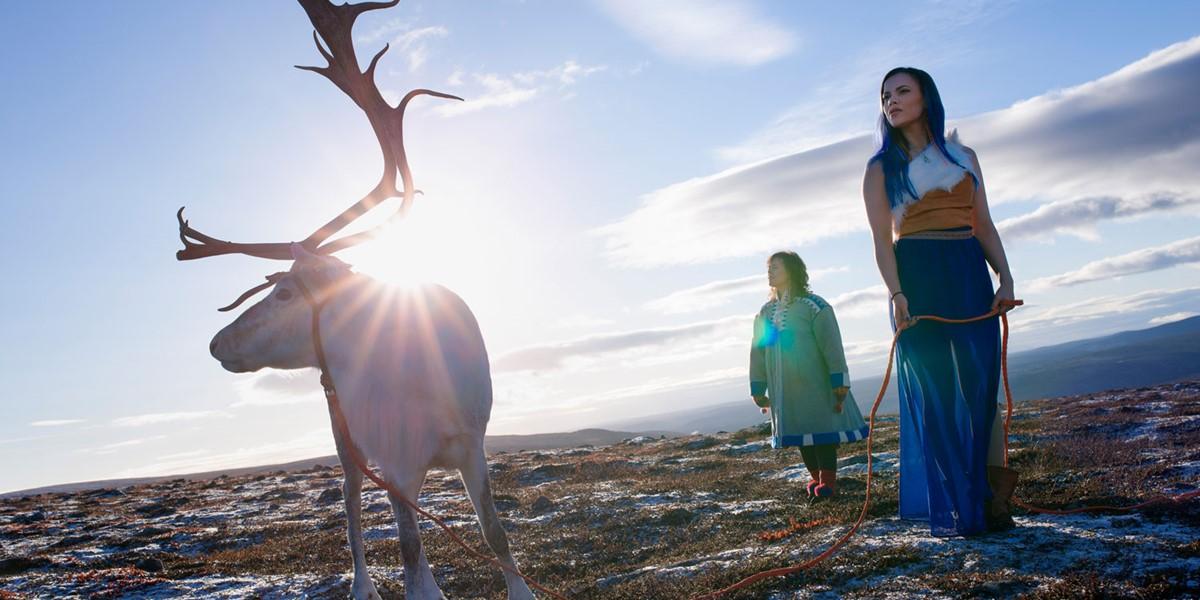
For both Hildá Länsman (right) and Ulla Pirttijärvi, Solju is one of several musical collaborations. The reindeer is an animal that holds cultural significance for the Sámi.Photo: Marja Helander
Länsman and Pirttijärvi’s other musical endeavours also combine yoiking with diverse styles. Länsman appears in the prog-rock outfit Gájanas; with Finnish accordionist Viivi Maria Saarenkylä in the duo Vildá; and in a project with sound designer and electronic musician Tuomas Norvio. Pirttijärvi’s collaborations include the groups Ulda, billed as modern Sámi music, and Áššu, based on traditional yoiks but including African musical influences.
Pirttijärvi lives in Utsjoki, another 125 kilometres (75 miles) north of Inari, on the Norwegian border. Länsman grew up there and recently relocated to Norway. Northern Sámi – their family’s first language – is widely spoken on both sides of the border at those latitudes.
Feeling a connection
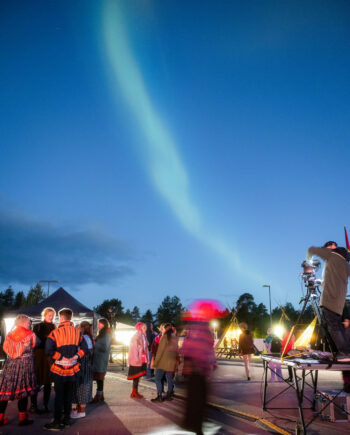
The famously unpredictable Northern Lights sometimes make an appearance at Ijahis Idja.Photo: Ville Fofonoff
Pirttijärvi went to school near Inari, where they had “several lessons a week” in Sámi, and the rest in Finnish. In Utsjoki, Länsman attended school in Northern Sámi, although some high school subjects were offered in Finnish for lack of Sámi-speaking teachers.
Later, she spent a couple years in the global music department at the Sibelius Academy in Helsinki. It was an opportunity to explore various styles and get a feel for how she might adapt them to yoiks and Sámi music. “You grow as a person, of course, but it’s also a musical exploration,” she says.
One experience that stood out was taking lessons in Bulgarian-style singing. “I can feel a connection and relate to music that comes from far away,” says Länsman.
Like a dream
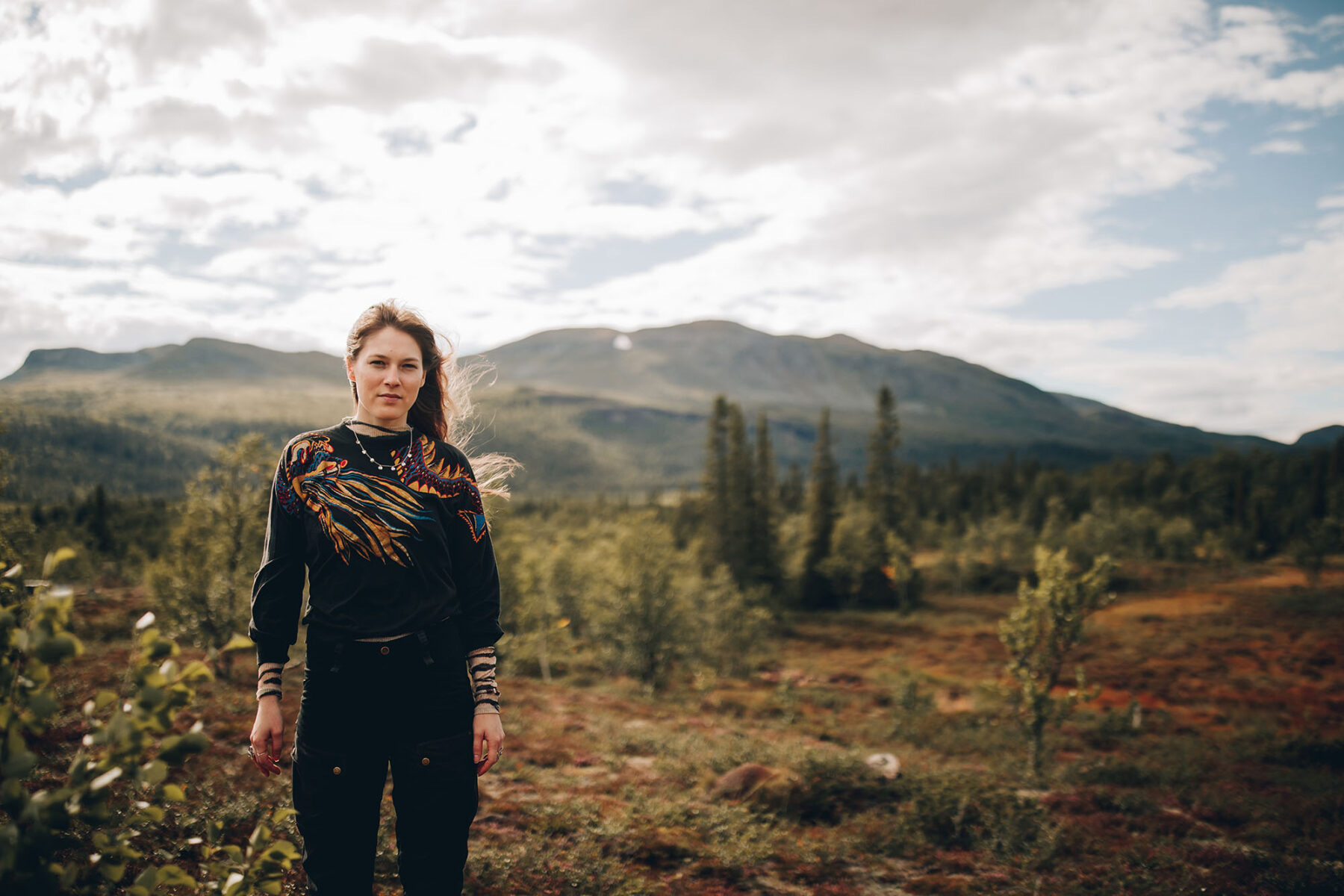
Katarina Barruk grew up speaking Ume Sámi.Photo: Sara Berglund
Ijahis Idja is one piece of the continuing vitality of Sámi culture and languages.
About 2,500 speakers of Northern Sámi live in Finland, with some 25,000 more in Norway and Sweden. It’s the largest of the fewer than ten Sámi languages still spoken. The two others in Finland, Skolt Sámi and Inari Sámi, have several hundred speakers each.
Musician Katarina Barruk (born in 1994) comes from a family whose home language is Ume Sámi. It is spoken by an estimated 100 people in the area of northern Sweden where she grew up. Her songs combine elements of pop, improvisation and yoiking; she sings in Ume Sámi. She and her band have performed all over the Nordic countries, including Ijahis Idja, and in continental Europe.
Sámi languages are separate languages, not just dialects. Speakers of different Sámi languages can understand each other to varying degrees. That makes it even more poignant for Barruk when audiences learn her lyrics and sing along at her concerts.
“It’s really moving,” she says. “To hear Ume Sámi, and to hear it from others – it’s supercool. That was like a dream when I was little, that this could happen. There wasn’t anything like that for me to listen to when I was little.”
Distinct goal
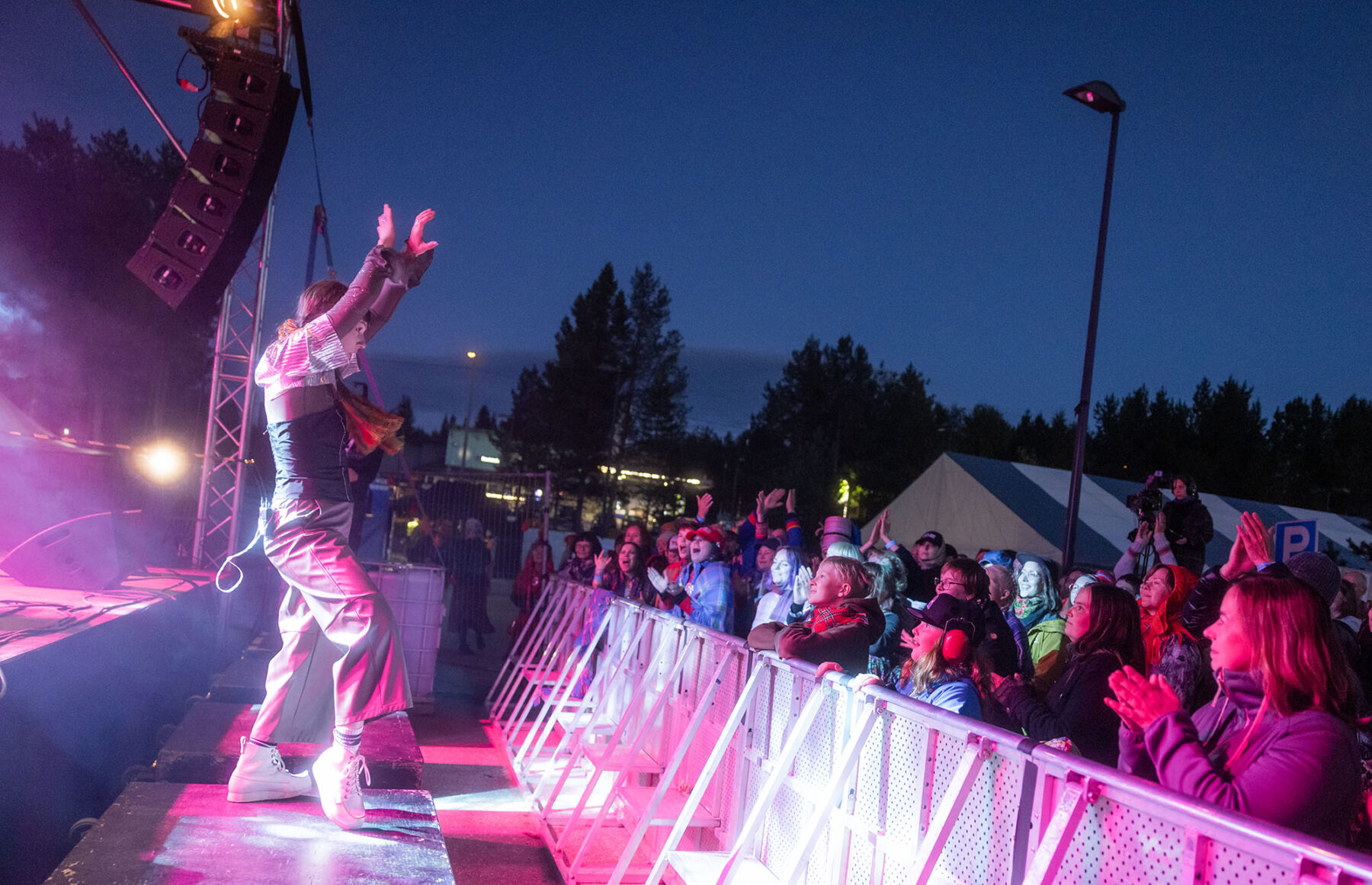
Katarina Barruk celebrates with her fans during a concert at Ijahis Idja.Photo: Ville Fofonoff
How has her family managed to maintain its language in surroundings that are overwhelmingly Swedish-speaking? “My father was very persistent,” she says. “He just kept going. He and my mother had a very distinct goal.”
For them, the case was clear: “This is our language, and it has to keep living – period,” says Barruk. “So we have fought for it, every day.” Since her late teens, she has been active in various efforts to help Ume Sámi regenerate. She has been a leader at language immersion weekends where people get together and speak Ume Sámi – mainly families, but anyone is welcome. “It’s really great to see their skills develop,” she says.
She also has two “apprentices” in a language mentoring programme. They meet and speak Ume Sámi, with longer sessions becoming possible as the participants build up their knowledge. The same methods have been used elsewhere in Sápmi and the world. In Inari, a similar mentoring system exists for Inari Sámi.
Long journey
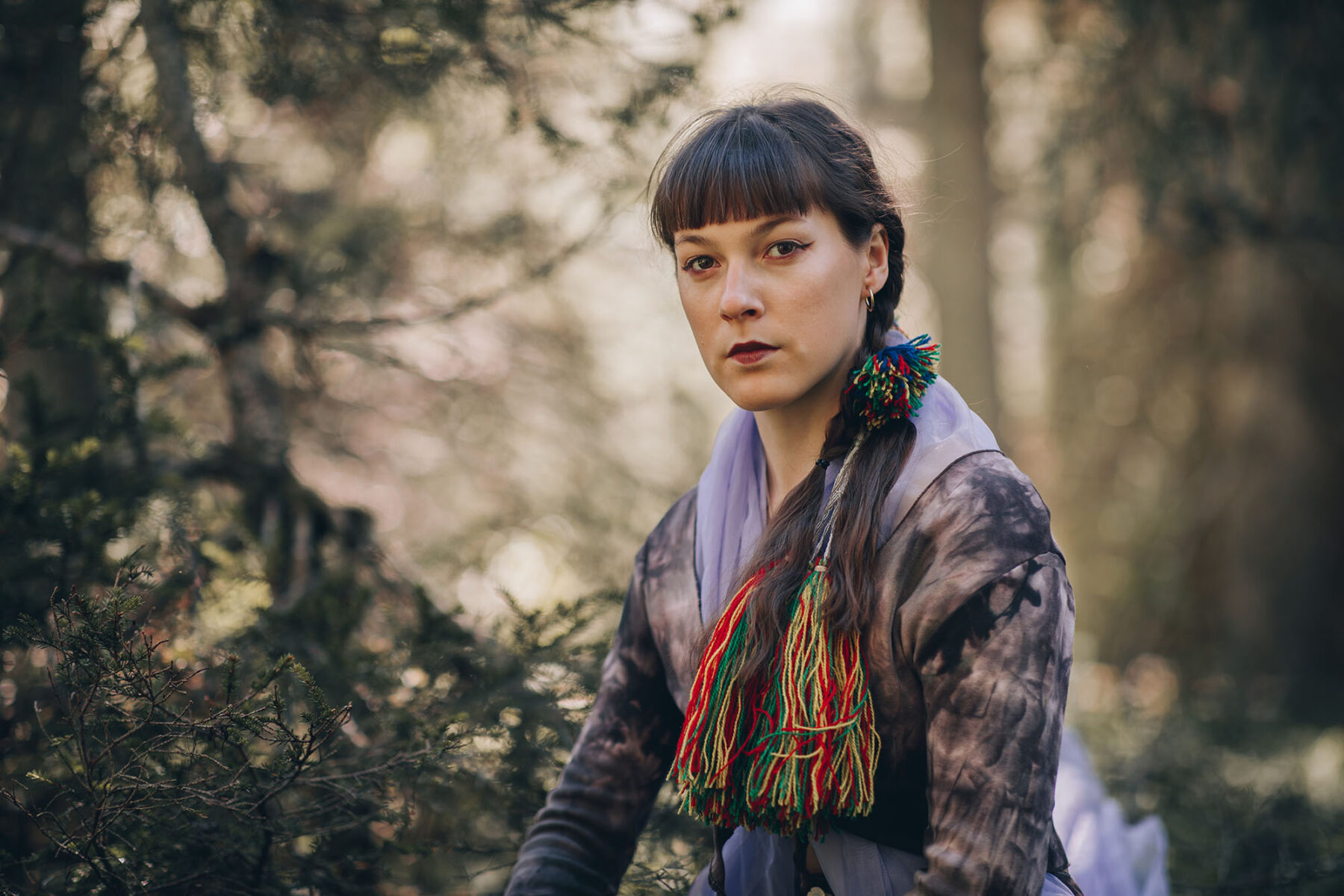
Katarina Barruk sees her music as one way of helping revitalise the Ume Sámi language.Photo: Sara Berglund
Barruk sees her music as a major way that she is contributing to revitalising the Ume Sámi language. Her yoiking is informed by archival recordings, another path to recovering what might have otherwise become lost. “There are also tons of other influences in my music, because the music I make is not traditional,” she says.
“It’s been a long journey to where I am today. You constantly keep going and trying to make something new. It’s fun to experiment.”
The Ijahis Idja festival organisers do much the same thing. They show off traditional Sámi music and culture while simultaneously highlighting modern bands from across Sápmi that are constantly pushing in new directions – and attracting crowds of fans in the process.
By Peter Marten, August 2024
